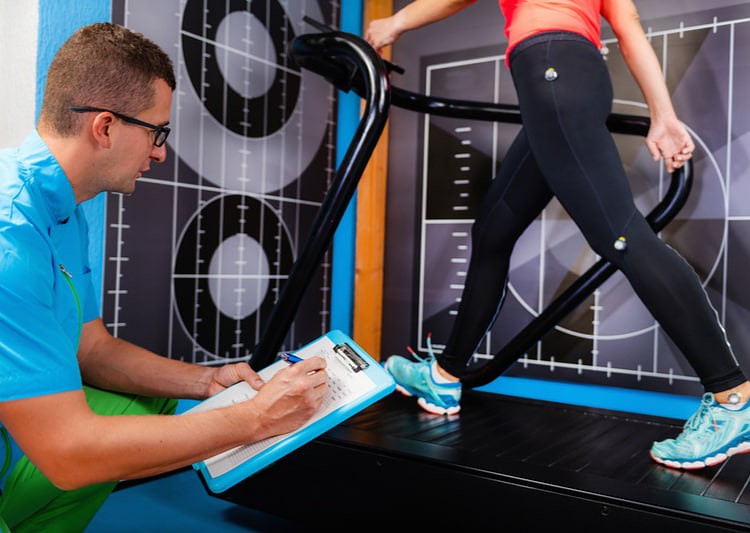You must consider two essential attributes when you are buying furniture — Ergonomics and Anthropometrics. Confused about the two concepts? Don’t worry, we’ll explain it all.
Anthropometrics is the study of the movements and measurements of the human body. Ergonomics studies the relationship between people and their working environment.
Anthropometric measurements and ergonomics rely on each other. The measurements of the former are used to calculate the latter.
In this article, we discuss everything you must know about ergonomics and anthropometrics. Why are they important? How do they contribute to a better lifestyle? What is the relationship between them? What are their benefits? And more.
Table of Contents
What are Anthropometrics?
Anthropometrics is the comparative study of the measurements and movements of the human body. It includes the collection of data like the body’s height, weight, and shape.

The word “Anthropometrics” is derived from two words —“Anthropos” and “Metron”. “Anthropos” means humans, and “Metron” means measurements.
Anthropometry measures all the physical parts and properties of the human body. It also measures the height of the elbow, popliteal height, and overall height.
All these measurements play a part in determining ergonomics. Ergonomics ensures that individuals can fully use a product and use it well.
Different fields incorporate anthropometrics to create a better user experience. We use this data when buying furniture, designing a building, or buying a vehicle.
Take an office chair, for example. The manufacturer can produce a chair that caters to the customer’s body measurement using anthropometric data.
They will consider the depth of the seat, the height of the chair, the size of the armrest, and more. This will offer the user comfort and accessibility.
What are Ergonomics?
Ergonomics is the concept of applying scientific statistics, measurements, and data to create a product and a comfortable environment that increases productivity and reduces fatigue.

Ergonomics studies how a job is performed in an environment. It also studies the conditions of the environment, how it impacts the human body, and how it can be improved.
Ergonomics is a holistic discipline. It takes physical, cognitive, environmental, and social factors into account.
Ergonomics understands how the human body interacts with the different elements of a work environment. It then applies data and principles to improve the individual’s performance.
Ergonomics considers the comfort factor at workplaces or any place you work from. There are several quality ergonomic chairs and desks in the market that allow you to work comfortably with minimal pain and discomfort.
Why Are Anthropometry and Ergonomics Important?
Using anthropometry and ergonomics, you can improve your quality of life, productivity and engagement at work, and your performance. Anthropometry and ergonomics can keep work injuries at bay and help keep you safe.

A manufacturer who knows anthropometry well can easily create an ergonomic product or environment. With the right anthropometric measurements, they can generate a piece of ergonomic furniture.
Most users expect their furniture to be comfortable and secure. Applying anthropometrics during furniture design can help achieve this.
Several health issues emerge due to prolonged hours of sedentary work. These can be prevented with proper ergonomic solutions implemented in office spaces.
Let’s take a look at a few health troubles that poor ergonomics cause:
Musculoskeletal Disorders
When you are stuck working in awkward positions or are sitting in the same position for prolonged hours, you can experience musculoskeletal disorders. Such disorders affect the muscles, ligaments, nerves, and blood vessels, causing other health complications.
Improper Posture and Back Injuries

Improper posture and severe back injuries are typical results of poor ergonomics. Sitting on a poorly-built chair for too long can make your neck rigid and stiff and your back uncomfortable.
When the chair is not ergonomically built, you can also suffer from a compromised posture. A poor posture results in a lack of confidence, spinal dysfunction, a pot belly, shoulder pain, and a disrupted digestive system.
Headaches
Good lighting also makes for good ergonomics. Working in a setting where the lights are dim—either on your screen or in the room—can lead to severe headaches and migraines in the long run.
Poor and dim lights can also make you lose sleep, focus, and concentration at work. This can eventually hamper your productivity levels.
Carpal Tunnel Syndrome

You may experience numbness and a tingling sensation in your fingers when you work against ergonomic principles. A combination of these symptoms is termed “carpal tunnel syndrome”.
An ergonomic desk, mousepad, keyboard, and chair can help keep away this condition. When you have ample space to rest your arms comfortably, you can prevent carpal tunnel syndrome.
How are Anthropometrics and Ergonomics Related?
Ergonomics applies anthropometric data to create optimal working conditions. The data includes human body measurements, size, shape, and limitations.

Anthropometric data is considered when building ergonomic workstations and other units. This ensures that the workstation or furniture adapts to the user, rather than the user having to adapt to it.
Anthropometrics is the foundation of good ergonomics. When anthropometric data is not considered while creating ergonomic products, users are less satisfied.
What are the Benefits of Anthropometry and Ergonomics?
Anthropometry and ergonomics benefit users as they improve health and contribute to an invigorating lifestyle.
Here’s how both of these factors play a pivotal role in different circumstances.
In Furniture Design
Most furniture is created in varying dimensions to accommodate different body sizes.

The anthropometrics of the target audience are considered. This allows people of different shapes and sizes to use the furniture without experiencing discomfort.
Anthropometrics can help design comfortable and accessible furniture.
For example, the height of a chair seat can be designed to allow users to easily lay their feet flat on the ground.
Similarly, the top shelf of cupboards may be constructed to ensure all users can easily access it. Many types of furniture come with multiple adjustment options.
A study showed that students tend to have a sedentary lifestyle. This increases their risk of developing musculoskeletal discomfort and pain. This is why it is crucial to consider anthropometric data when designing ergonomic school furniture.
In Architectural Design
Architectural buildings should be designed according to the different anthropometric statistics of humans. People should not have to adapt to the building’s design. Instead, the building should be constructed in a way that it adapts to the human body.

Ceilings should be tall enough to accommodate people of varying heights. Doors and gates should be wide enough to allow easy entry and exit. Narrow hallways should be avoided, and staircases should be accessible.
There should be enough space to arrange furniture and different fixtures in a room. All of these architectural designs are determined by calculating anthropometrics.
Architectural designs should cater to children, senior citizens, and people with disabilities. Ramps and lifts must be installed to help people move easily across a building.
In the Workplace
Poor office ergonomics lead to less than optimal working conditions for employees. When you sit on an uncomfortable chair, your legs dangle in the air. You don’t have a designated space to rest your arms. This eventually leads to the development of major health concerns.

Working in an ergonomic office space is the best way to prevent work-related injuries. The different sizes and shapes of employees must be calculated before designing the workspace. This will ensure comfort and safety.
You need accurate anthropometric measurements to create an ergonomically designed workspace. Collect measurement data like shoulder height from a sitting position, thigh thickness, hip-width, seat height, and desk height before designing furniture.
The surface height of furniture largely depends on the kind of work someone is involved in. One must look for seat adjustability, seat incline, lumbar support, backrest, and neck support in an ergonomic chair.
Summing Up
When you work in a space with poor ergonomics, your health and productivity levels decline. You find it tough to sit for long hours and concentrate on your work.
This is why anthropometrics and ergonomics are important.
Before you design your ergonomic working conditions, make sure you have the correct anthropometric measurements. You will certainly enjoy your new healthy and comfortable workspace.

My name is Vance, and I am the owner of To Ergonomics. Our mission is to improve your workflow by helping you create a supportive and welcoming environment. We hope that you’ll find what you’re looking for while you’re here.

